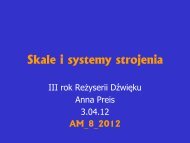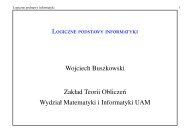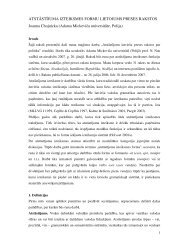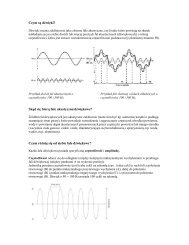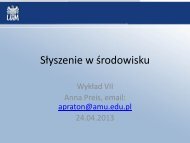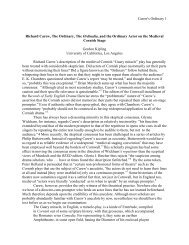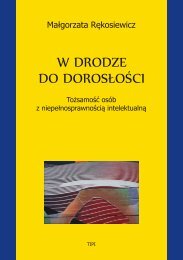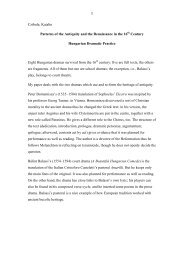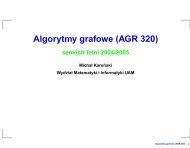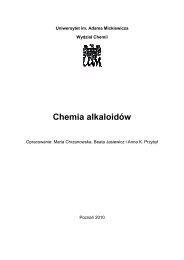Amir Weiner Getting to Know You
Amir Weiner Getting to Know You
Amir Weiner Getting to Know You
Create successful ePaper yourself
Turn your PDF publications into a flip-book with our unique Google optimized e-Paper software.
24 AMIR WEINER AND AIGI RAHI-TAMM<br />
governments of these countries during the Civil War. Accordingly, the name<br />
lists kept growing. 64<br />
With the return <strong>to</strong> the occupied terri<strong>to</strong>ries in sight as the USSR turned<br />
the tide against Germany, the archivists were busy feeding information<br />
<strong>to</strong> the operational groups then in formation—the core units in charge of<br />
reestablishing Soviet power in the recovered terri<strong>to</strong>ries—as well as verifying<br />
the political credentials and past of members of these groups. 65 Similar <strong>to</strong> the<br />
eve of the annexations in 1939–40, all heads of local archives were required<br />
in February 1943 <strong>to</strong> assist the security services in composing “orientation<br />
surveys” that mapped out non-Soviet political and social institutions, their<br />
structure, composition, activities, networking, and contacts with foreign<br />
governments and organizations. 66 The archival department also combed<br />
through newspapers that had been published in German-occupied Es<strong>to</strong>nia,<br />
which it obtained with the help of the political departments of the Leningrad<br />
Front and the Es<strong>to</strong>nian Riflemen’s Corps. This source alone yielded 2,280<br />
alleged collabora<strong>to</strong>rs from all walks of life. In July 1944, the assembled data<br />
were introduced <strong>to</strong> the would-be chiefs of county departments of the NKVD–<br />
NKGB, who then drew up lists of suspects in the respective counties. Concrete<br />
guidelines for the use of German material were issued six months later during<br />
a union-wide conference of archival and departmental direc<strong>to</strong>rs. 67 This was<br />
just a first attempt <strong>to</strong> use German data. The massive archives the Germans<br />
left behind were promptly employed for the study of wartime institutions<br />
and personnel, especially the study of local armed auxiliary forces. The quest<br />
continued well in<strong>to</strong> the postwar years. In March 1949, the materials of<br />
the German Wartime Resettlement Committee were discovered and a list<br />
was drawn up of people who had wanted <strong>to</strong> evacuate <strong>to</strong> Sweden. The same<br />
applied <strong>to</strong> other cleansing campaigns, where the card index was used, for<br />
example, <strong>to</strong> verify the wartime record and political, social, and ideological<br />
credentials of schoolteachers, whose detailed questionnaires were subjected<br />
<strong>to</strong> repeated verifications. Thirty-six categories of “political taint,” comprising<br />
45,376 individuals, were registered in 1945, followed by 39,468 persons in<br />
40 categories a year later. 68<br />
64 ERA f. R-2338, n. 1, s. 34, ll. 33–34.<br />
65 Tsentral´nyi derzhavnyi arkhiv hromads´kykh ob˝iednan Ukraïny (TsDAHOU) f. 1, op.<br />
6, spr. 698, ark. 1–3; ERA f. R-2338, n. 1, s. 33, ll. 33–34; Eestimaa Kommunistliku Partei<br />
Keskkomitee organisatsiooniline struktuur 1940–1991, ed. E. Tarvel (Tallinn: Kistler-Ritso Eesti<br />
Sihtasutus, 2002), 182–83.<br />
66 ERA f. R-2338, n. 1, s. 34, ll. 41–41a.<br />
67 ERAF SM f. 17/1, n. 1, s. 7, ll. 38–38a; GARF f. 5325, op. 10, d. 1697, l. 11.<br />
68 ERA f. R-2338, n. 1, s. 59, ll. 47, 78, 71.



